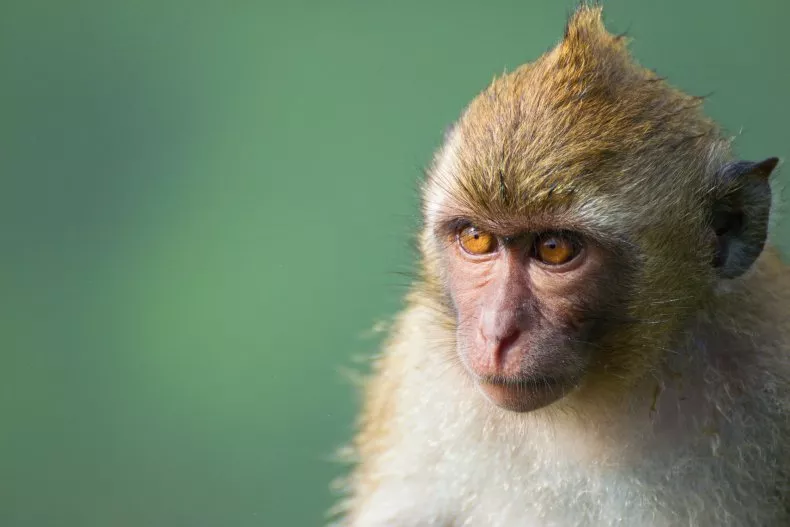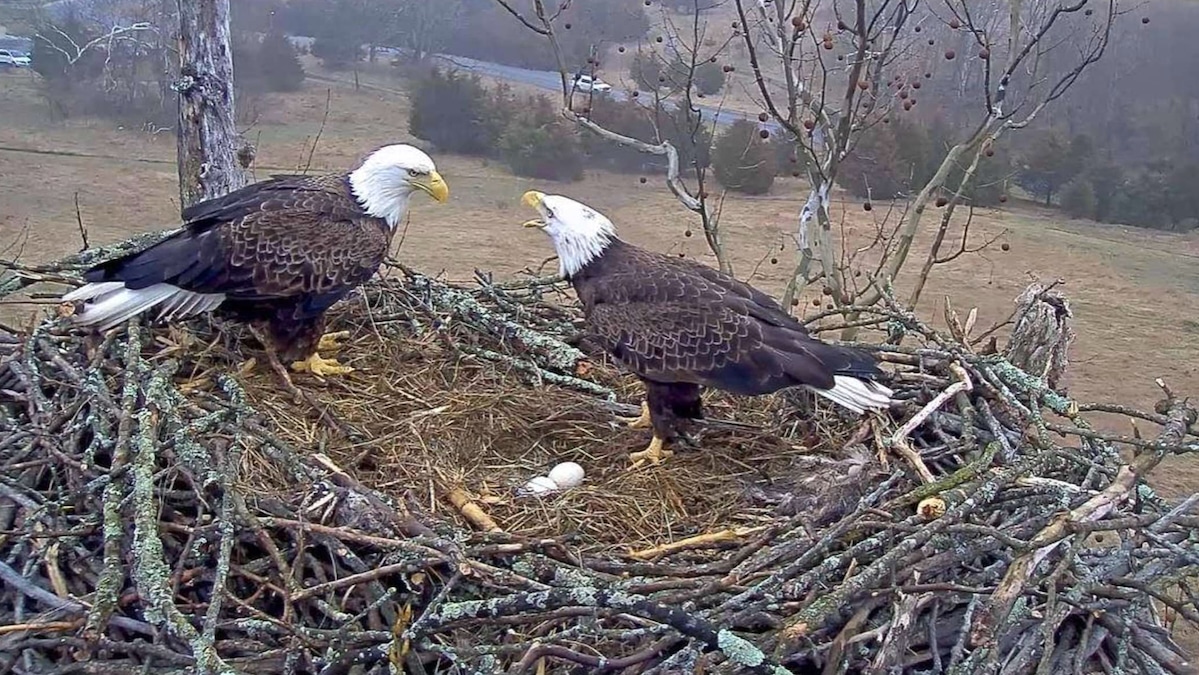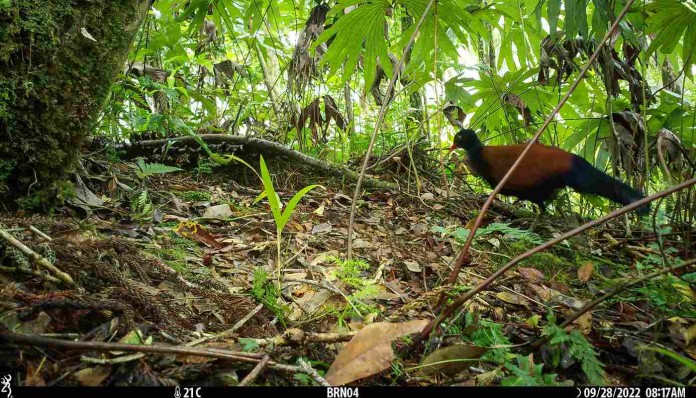Deep in the wilderness, surrounded by ferns and the calls of cockatoos, Richard Marchant was so focused he didn’t realise three leeches were latched to his face.
The ecologist had spent the day on his knees, searching for tiny invertebrates carried by a stream winding through Wilsons Promontory, a 50,000 hectare national park in Victoria, on the Australian mainland’s most southerly point.
When night fell, Marchant and his colleague Julian Finn used fluorescent lights to attract rare bugs, which were catalogued to study the history of evolution. The pair are among hundreds of scientists drawn each year to the park, which is home to more than 150 endangered species.

Watching the ecologists was Mark Norman, the chief conservation scientist with Parks Victoria, who abruptly stopped work after spotting a rare butterfly flying over the stream. Marchant was summoned in his waders to identify the species, net in hand.
Norman is responsible for protecting the endangered species, from eastern bristlebirds and pygmy-possums to growling grass frogs and ground parrots. So far, they have been spared the worst of human activity. But Norman is worried by a different threat: the steady southward march of invasive species.

About 680 foxes, 320 cats and thousands of hog deer have moved through pastoral land to damage the promontory’s waterways, strip its vegetation, restrict its biodiversity and prey on native animals.
Norman and his team say they have thrown everything at the invading species. Rangers have hiked deep into the wilderness to bait hundreds of cats. Traps have been set. Helicopters have hovered just above treetops as gunmen shoot deer darting through thick scrub. Now they are planning something much bolder.
“Everything is moving south with climate change,” Norman says. “This is the place where you draw a line in the sand and say, ‘we are going to let things persist here until we turn things around.’”


That line will soon be a two-metre-high, partially electrified fence running along the park’s northern perimeter. Stretching 10km across a narrow land bridge connecting the prom to the mainland, the fence will run adjacent to farmland and weave around huge shifting sand dunes. To the east, it ends in a protected wetland; on the west, an inlet popular with tourists and fishers.
“The fence is kind of a necessary evil to turn back the wrongs of the past,” Norman says.
“We don’t want these species to go extinct because we failed to manage these cats, foxes and deer. We have animals that are on the brink here and species that we have lost that we could bring back. But it’s all a bit pointless if there’s a constant stream of nasties coming south from the mainland.”
The fence, which still needs final approval and is not expected to be built within the next two years, won’t completely stop the invasion. The rangers don’t believe a sliding gate at the main entrance is practical. Nor will the fence extend into the water on either side. When the tide is out, a muddy pass will open for animals to walk around it.
Ben Fahey, the manger of ecology and strategy with Parks Victoria who is leading the design of the fence, concedes it will be “leaky”. But knowing the entry points allows rangers to focus their baiting and culling on those locations. Already, cameras are being installed near the proposed weak spots to monitor animal movements.
“If we can can keep them out, then we have a really good opportunity to restore those species which are really vulnerable to things like habitat degradation from grazing by deers. Without predators, we expect bandicoots, small mice and the broad-toothed rat to do really, really well,” Fahey says.

The recent arrival of sambar deer in the promontory also has rangers nervous. The much larger deer have enormous antlers and cause havoc to habitats. There are now more than 1m sambar in Victoria and the population is moving south from the alps to the promontory. Three have been shot on the prom so far, including one that swam to an offshore island.
“The deer are the most devastating,” says Brooke Love, a restoration ecologist. “They graze tiny, fragile plants. There are thousands of little seedlings all around us that get continually shut down by these deer and never reach maturity. They interrupt the forest’s cycle of life.”
On the edge of heathland expanse, where dozens of threatened eastern bristlebirds were released after their habitat was destroyed in the black summer bushfires, Love recalls how she helped discover an endangered species earlier in the week. The small plant was thought to have been extinct outside a single population near Bredbo, in the alpine region outside Canberra.

“One of the volunteers who was with me at the time turned and said, ‘I searched the alps for 25 years to find this plant. I never thought I’d find it beside a road at the prom, where there’s no elevation,’” Love says.
“This place breaks the rules.”
But the fence is not without its critics. Its route has already been changed to account for cultural importance and artefacts of the three Indigenous nations that claim the promontory: the Boonwurrung, Bunurong and Gunaikurnai traditional owner groups.
“I’d say that there’s been mixed responses to the fence being a barrier across cultural landscapes,” Norman says. “But we’re having good conversations about why the need for this is so great.”
A leadership steering committee has been formed to hear the views of traditional owners. Fahey admits there have been challenges, including potential disturbances to important cultural sites.
“This is a large cultural landscape that is really important to three traditional ownership groups. There are a lot of artefacts through the park and tangible cultural heritage,” he says. “We need to be mindful of that when constructing anything here.”
And then there’s the cost. In 2020, $6m was set aside for the fence by the state government as part of a $23m package to improve conservation and tourism. But as the reality of building the fence becomes clearer, that figure could increase.
The rangers believe the fence could be invaluable.

As Norman wades through thick reeds in the Darby Swamp, he says the fence will ensure nine different habitat regions can remain refuges of last resort for struggling species across the country.
“You could have a 50,000 hectare desert sanctuary and bring back 12 mammals, but here you get ancient cool temperature rainforest, warm temperature rainforest, heathland, mangroves, salt marsh wetland, coastal dune systems, offshore islands with unique genetic diversity, grasslands and open woodlands,” Norman says.
For those devoted to protecting the prom, a “necessary evil” could be the best shot at saving the future of our native wonders.
This article by Henry Belot with Photography by Christopher Hopkins was first published by The Guardian on 15 January 2024. Lead Image: Brooke Love, a Parks Victoria ecologist, inspects a native flower in Wilsons Promontory national park, where a fence may be built to slow the spread of invasive species. Photograph: Christopher Hopkins/The Guardian.
What you can do
Help to save wildlife by donating as little as $1 – It only takes a minute.







Leave a Reply